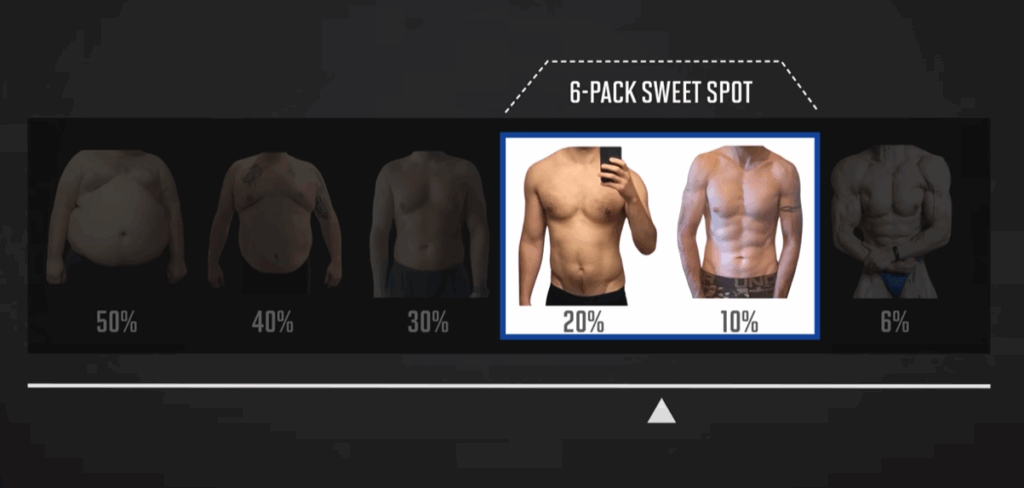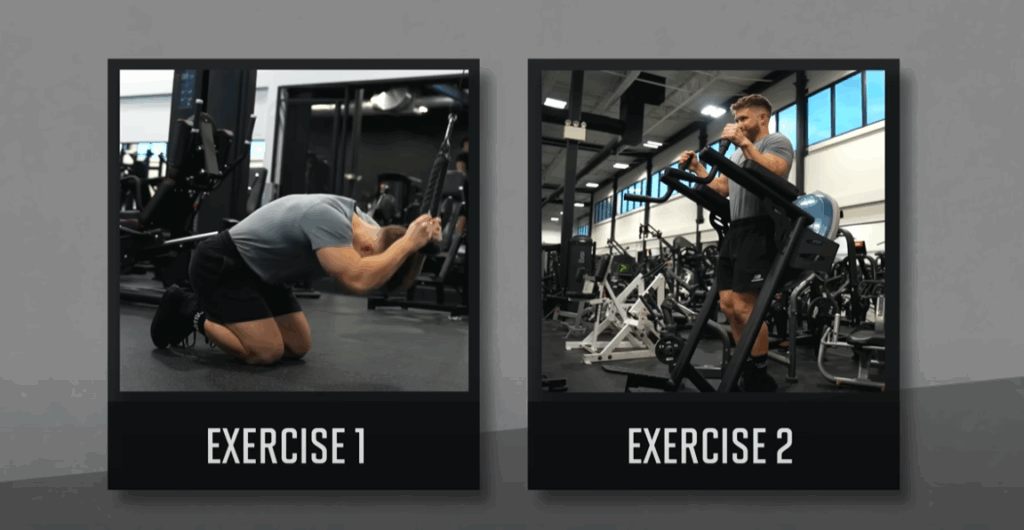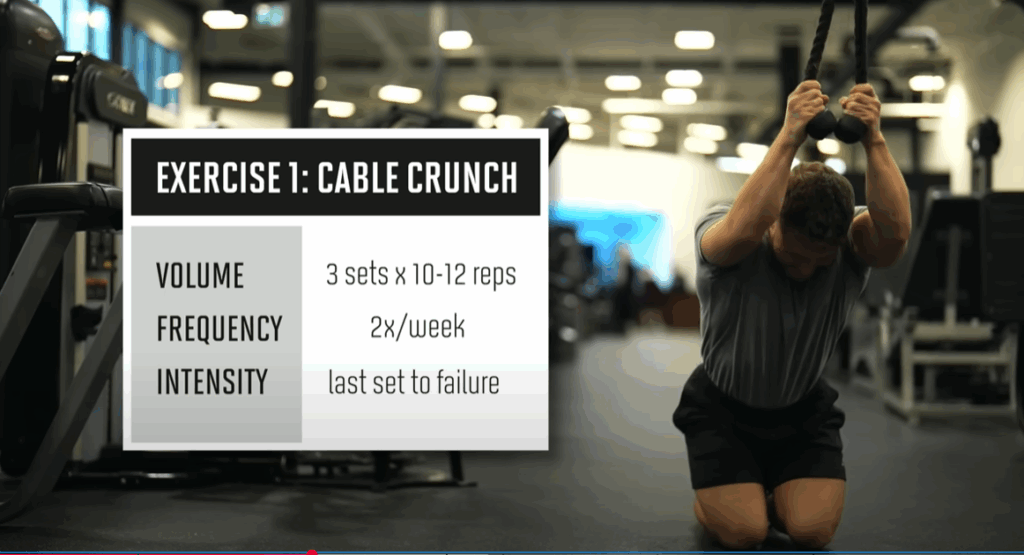How to Get Visible Abs: A Complete Guide to Sculpting a Defined Midsection
Ever wonder what’s really standing between you and a chiseled six-pack? For most people, the answer comes down to two things: body fat levels and proper abdominal training. Visible abs aren’t reserved for elite athletes or fitness models — they’re achievable with the right combination of diet, training, and realistic expectations.
In this guide, we’ll break down everything you need to know to develop defined abs — including what body fat percentage is needed, which exercises actually build your core, how to set up your diet for fat loss, and which supplements are worth your money.

What Body Fat Percentage Do Abs Start to Show?
Let’s start with expectations. Your ab muscles might be strong, but unless your body fat is low enough, they’ll stay hidden under a layer of fat.
- Men typically begin to see some ab definition around 15–20% body fat. A full six-pack is generally visible closer to 10–12%, and anything below 8% is considered competition-level lean.
- For women, abs may become noticeable around 22–26% body fat, with more pronounced definition appearing at 18–20%. Dropping below that can bring hormonal and energy-related complications, so it’s not sustainable for most women long-term.
The “sweet spot” for most people — where abs are visible but energy levels and health remain optimal — is:
- 10–15% for men
- 18–24% for women
Why Training Your Abs Still Matters
There’s a common misconception that ab workouts are pointless unless you’re already lean. That’s like saying there’s no reason to train your arms unless you’re wearing a tank top. The truth is: building your abdominal muscles will make them more visible when you do lean down — just like any other muscle.
The key is to train them effectively, which means doing more than endless crunches or fast-paced circuits. Those might give you a temporary burn, but they won’t build muscle. For defined abs, you need progressive resistance training.

The Only Two Ab Exercises You Really Need
Most effective ab routines revolve around two movement patterns: spinal flexion and hip flexion. In plain terms: crunching and leg raising.
Here are two science-backed exercises that target these movements efficiently:
1. Weighted Crunch Variation
This targets the entire rectus abdominis — the muscle responsible for that six-pack look.
- Option A: Cable crunches — Use a rope attachment, kneel, and curl your torso down under control, engaging your core throughout.
- Option B: Plate-weighted crunches — Lie on your back with a plate on your chest, and crunch upward slowly.
Aim for 3 sets of 10–12 reps, twice a week. Increase the weight or reps over time.
2. Leg Raise Variation
This emphasizes the lower portion of your abdominals.
- Option A: Hanging leg raises — Hang from a bar and lift your legs in a controlled motion.
- Option B: Roman chair leg raises — Great for support and spinal alignment.
Start with 3 sets of 10–15 reps, working up to 20 over time. If needed, begin with bent knees and progress to straight legs or add ankle weights as you get stronger.
What About Planks or Twists?
While exercises like planks, Russian twists, or woodchoppers are great for core stability and rotational strength, they aren’t as efficient at building the visible six-pack. Consider them supplemental, not central, to your program.
How to Structure Your Ab Training Plan
Here’s a basic, effective schedule:
- Twice a week: Perform both the weighted crunch and leg raise variations.
- Rest at least 48 hours between ab workouts to allow recovery.
- Always train near failure on your last set to stimulate growth.
Optional: Include 2–3 sessions of low-intensity cardio per week. Not only can it accelerate fat loss, but recent studies suggest that combining cardio with resistance training leads to smaller waistlines compared to lifting alone.
Setting Up Your Diet for Visible Abs
Even the best ab workouts won’t do much if your nutrition is off. To reveal your abdominal muscles, you must reduce your body fat. Here’s a simple way to set up your fat-loss plan.
Step 1: Calculate Your Caloric Intake
- Multiply your body weight (in pounds) by 10–12 to get your daily calorie target for fat loss.
Step 2: Determine Protein Needs
- Multiply your goal body weight by 0.8–1.0 to get your daily protein intake in grams.
Step 3: Hit Minimum Fat
- Eat at least 50 grams of dietary fat per day to support hormone function.
Whatever’s left can be split between carbs or additional fat based on your food preferences.
Do I Have to Eat Super Clean?
Not necessarily. You can still enjoy some processed foods as long as your overall calorie and macronutrient targets are met. That said, prioritizing whole, nutrient-dense foods (lean protein, fruits, veggies, whole grains, healthy fats) will help with satiety, digestion, and energy levels.

Tracking Progress the Smart Way
Don’t rely only on the bathroom scale. Weight can fluctuate daily due to water retention, digestion, and hormonal changes.
Instead:
- Take progress photos every 4 weeks in consistent lighting.
- Measure your waist around the navel to track fat loss directly from your midsection.
These methods give a clearer picture of fat loss and muscle definition than weight alone.
Watch Out for These Common Pitfalls
- Extreme calorie deficits: Losing weight too quickly often results in muscle loss, not just fat. Stick to a steady rate of 0.5–1% of your body weight per week.
- Obsessing over supplements: Supplements help, but they’re never the main driver of fat loss or muscle gain.
- Setting unrealistic body fat goals: Going below 10% (men) or 18% (women) can cause fatigue, cravings, and decreased libido. Aim for a sustainable level of leanness.
Supplements That Can Help (But Aren’t Magic)
Only a few supplements are worth considering:
- Whey or vegan protein powder: Convenient for hitting protein targets, especially post-workout.
- Creatine monohydrate: Helps increase strength and muscle volume. Take 5g daily.
- Caffeine: Can improve focus and performance. Use it strategically, not daily, to avoid tolerance buildup.
Final Thoughts
Getting defined abs comes down to two main things: building your ab muscles with smart training and revealing them with a sustainable diet plan. There’s no magic trick, but if you’re consistent with resistance training, mindful with your calories, and patient with your timeline, visible abs are well within reach.
Stick to the basics. Trust the process. And enjoy the results that come with hard work and consistency.



